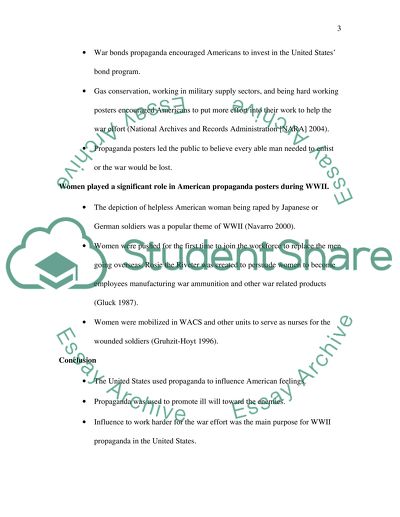Cite this document
(“World War II propaganda posters Essay Example | Topics and Well Written Essays - 1250 words”, n.d.)
Retrieved from https://studentshare.org/miscellaneous/1562073-world-war-ii-propaganda-posters
Retrieved from https://studentshare.org/miscellaneous/1562073-world-war-ii-propaganda-posters
(World War II Propaganda Posters Essay Example | Topics and Well Written Essays - 1250 Words)
https://studentshare.org/miscellaneous/1562073-world-war-ii-propaganda-posters.
https://studentshare.org/miscellaneous/1562073-world-war-ii-propaganda-posters.
“World War II Propaganda Posters Essay Example | Topics and Well Written Essays - 1250 Words”, n.d. https://studentshare.org/miscellaneous/1562073-world-war-ii-propaganda-posters.


